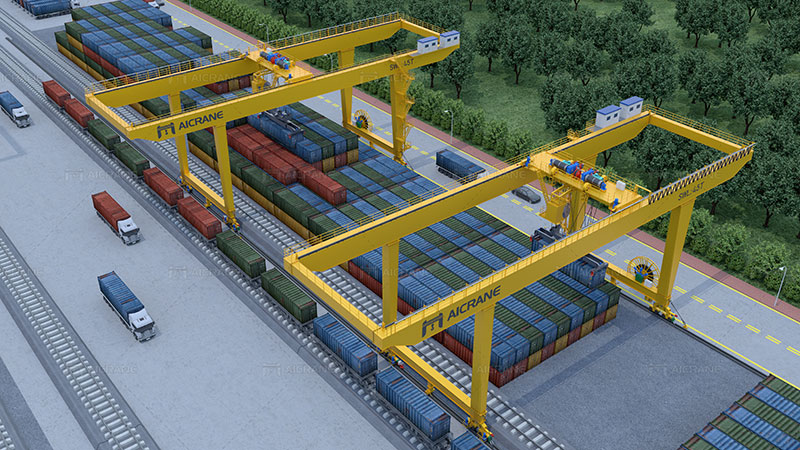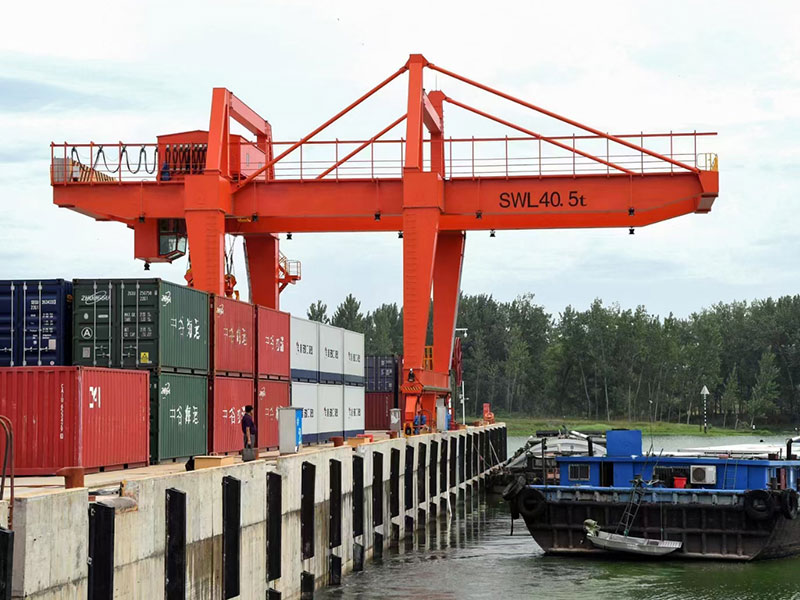Container terminals and ports are vital components of global trade, facilitating the movement of goods across continents. At the heart of these operations are Rubber-Tired Gantry (RTG) and Rail-Mounted Gantry (RMG) container cranes, which play a crucial role in loading, unloading, and stacking shipping containers. To ensure the efficiency, safety, and reliability of these complex machines, a comprehensive maintenance strategy is essential. In this article, we delve into the maintenance aspects of RMG container cranes, highlighting key considerations and best practices.
Understanding RMG Container Cranes
Rail-Mounted Gantry (RMG) container cranes are large, technologically advanced machines used to handle containers in intermodal yards and container terminals. Unlike RTG cranes, which move on rubber tires, RMG container cranes travel along a set of rails, providing greater stability and precision. These cranes typically consist of a steel superstructure, trolley, spreader, and electrical and control systems. Given their critical role in the supply chain, proper maintenance is vital to ensuring seamless operations.

Key Maintenance Considerations
1. Routine Inspections:
Regular inspections are the foundation of any maintenance strategy. Visual inspections should be conducted daily to identify any visible wear and tear, loose bolts, or damaged components. Periodic comprehensive inspections by qualified personnel help detect any issues that may not be apparent during daily checks.
2. Preventive Maintenance:
Preventive maintenance involves scheduled actions aimed at reducing the risk of breakdowns. Lubrication of moving parts, tightening of bolts, and replacement of worn-out components are integral parts of preventive maintenance. A well-maintained crane experiences fewer unexpected downtimes and operational disruptions.
3. Electrical System Checks:
The electrical and control systems of an RMG crane are intricate and play a significant role in its performance. Regular checks on the control panels, sensors, motors, and communication systems are essential to ensure accurate positioning, safe operation, and efficient communication between various components.
4. Structural Integrity:
RMG cranes operate in challenging environments, exposed to various weather conditions and heavy loads. Regular structural inspections ensure that the crane’s structural components are not compromised by corrosion, fatigue, or excessive stress. Any signs of deformation or structural weakening should be addressed promptly.
5. Spreader Maintenance:
The spreader is the component that interacts directly with the containers. Regular inspection and maintenance of the spreader’s lifting mechanisms, twistlocks, and sensors are critical to ensure smooth and secure container handling.
6. Rail and Wheel Maintenance:
Since RMG cranes travel along rails, the condition of both the rails and wheels is crucial. Regular rail inspections for wear, cracks, and alignment issues are vital. Wheel maintenance, including checking for wear, cracks, and proper lubrication, contributes to the crane’s stability and movement accuracy.
7. Safety Systems Testing:
RMG cranes are equipped with various safety systems, including anti-collision sensors, load limiters, and emergency stop mechanisms. These systems need to be regularly tested and calibrated to ensure their functionality and effectiveness in preventing accidents.
8. Documentation and Record Keeping:
Maintaining detailed records of inspections, maintenance activities, and repairs is essential. These records provide a historical perspective on the crane’s maintenance history, aiding in identifying recurring issues, planning future maintenance, and demonstrating compliance with regulations.

9. Training and Skill Development:
Properly trained maintenance personnel are key to an effective maintenance program. Regular training sessions keep maintenance staff updated on the latest technology, best practices, and safety procedures, ensuring they can effectively troubleshoot and address issues.
10. Collaboration with Manufacturers:
Engaging with the gantry crane manufacturer or authorized service providers can offer valuable insights into maintenance requirements and best practices. They can provide guidance on maintenance intervals, recommended spare parts, and specialized procedures.
Benefits of Effective Maintenance
Implementing a robust maintenance strategy for RMG container cranes offers numerous benefits:
Increased Reliability: Regular maintenance minimizes the risk of unexpected breakdowns, ensuring that the crane operates consistently and meets operational demands.
Extended Lifespan: Well-maintained cranes have a longer operational lifespan, providing a better return on investment.
Enhanced Safety: Properly maintained cranes reduce the risk of accidents and ensure the safety of personnel working in the vicinity.
Optimized Performance: Regular maintenance ensures that the crane performs optimally, leading to efficient container handling and improved terminal throughput.
Cost Savings: Preventing major breakdowns and addressing issues early on can significantly reduce repair costs and downtime.
Conclusion
Rail-Mounted Gantry (RMG) container cranes are integral to the smooth functioning of container terminals and ports, serving as the backbone of global trade operations. Effective maintenance practices are the cornerstone of ensuring their reliability, efficiency, and safety. By adhering to routine inspections, preventive maintenance schedules, and specialized component checks, terminal operators can reap the benefits of extended crane lifespans, reduced downtime, and optimized operational performance. Collaborating with industry experts, crane manufacturers, and qualified maintenance personnel ensures that RMG container cranes continue to play a pivotal role in facilitating the movement of goods across the globe.